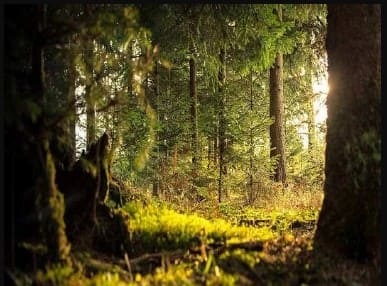
Study reveals tree diversity improves carbon storage, soil fertility in forests

Alberta [Canada], April 30 (ANI): A recent University of Alberta research found that sustaining tree diversity in Canada’s diverse forests throughout time can help enhance carbon capture and avert climate change.
The study, published in Nature, is the first of its kind to show the sustained benefits of tree diversity on a large spatial scale, in terms of storing carbon and nitrogen in the soil. It reinforces the importance of biodiversity conservation in forests, says Xinli Chen, lead author on the paper and postdoctoral fellow in the Faculty of Agricultural, Life & Environmental Sciences.
“Conserving tree diversity is a valuable tool in mitigating climate change, particularly in enhancing carbon storage in soil,” he says.
While it’s already been established that increasing soil carbon and nitrogen storage can help ease the effects of climate change and sustain soil fertility, stocks of both elements have declined substantially on a global level due to factors like forest fires, deforestation and land use change, he notes. Conserving and promoting tree diversity in forests can help increase the levels of soil carbon and nitrogen.
The researchers analysed Canada’s National Forest Inventory database and used statistical modelling to provide new evidence of a link between greater tree diversity and higher soil carbon and nitrogen accumulation in natural forest ecosystems over decadal time scales, meaning a time scale over 10 years or longer.
The work, done in collaboration with scientists from Canada, Japan and the United States, confirms collective findings from previous experiments. Specifically, the research showed that over the long term, evening out the numbers of tree species in natural forests would boost carbon and nitrogen in the organic soil layer by 30 and 43 per cent, respectively.
Hand in hand with that, increasing the variety of functional traits such as leaf nitrogen content and adult height of different tree species within a community could enhance carbon and nitrogen storage in the top mineral soil layer by 32 and 50 per cent.
The findings can “help guide growing efforts to use forests for carbon sequestration by protecting and enhancing the tree species diversity, which will at the same time benefit the productivity of forests today and in future,” Scott Chang notes. (ANI)
More News
Greenwashing and ESG: Separating Facts from Fiction
Greenwashing is a growing concern as companies seek to appear environmentally re...
How to Start the ESG Journey: An Indian Perspective
This comprehensive guide outlines a strategic roadmap for Indian businesses to i...
Navigating the Evolving ESG Regulatory Landscape? Part 2- U.S. and APAC
As ESG regulations continue to evolve globally, this analysis explores key devel...
Navigating the Evolving ESG Regulatory Landscape? Part 1- EU and UK
Governments and regulatory bodies are rapidly advancing ESG regulations to enhan...
CSRD: Expanding the Scope of Corporate Accountability
Stay ahead of evolving corporate sustainability regulations with our in-depth gu...


